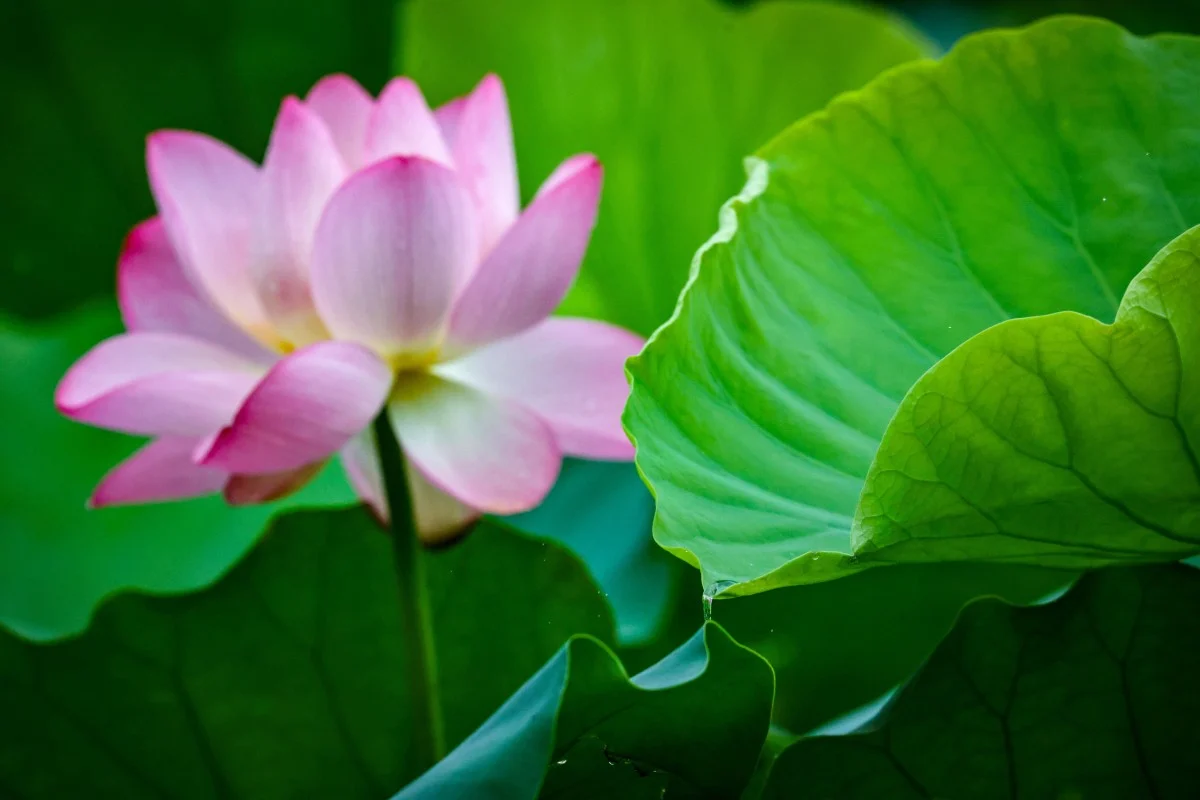Chinese scientists create energy from lotus leaves, opening door to plant power source
Chinese scientists have created an energy generator that harnesses the transpiration of plants to create electricity, which could transform almost all leaves on Earth into a sustainable and continuous energy source.The team said its leaf transpiration generator – which they demonstrated using a lotus leaf – was able to power small electronic devices, and could be used to create plant-powered electricity networks.
“This study not only uncovers the unprecedented hydrovoltaic effect of leaf transpiration but also provides a fresh perspective for advancing green energy technologies,” the team wrote in a paper published in peer reviewed journal Nature Water on September 16.Hydrovoltaic electricity relies on the movement and interaction of water with solid surfaces. Current devices often require a consistent water supply, creating geographic limits as devices must be near bodies of water, such as rivers or dams.
“However, the natural transpiration of plant leaves, as the largest water flux on land accumulating immense latent energy, has rarely been directly harvested,” the researchers from the Fujian Agriculture and Forestry University said. “Herein, we pioneered the development of a living lotus leaf transpiration generator (LTG) prototype device to demonstrate a viable electricity generation via leaf transpiration.”
Transpiration is the process of water movement through a plant’s roots to tip, and the evaporation of water through its leaves or flowers. The researchers estimated electricity generation through transpiration from plants across the globe could produce 67.5 terawatt-hours of electricity a year. “Through further research and technical optimisation, leaf transpiration power generation has the potential to become a widely used and commercially viable technology. Its core advantages are sustainability, eco-friendliness and low cost,” said Hu Qichang, first author of the paper and a professor at the university.
A transpiration-based generator could offer distinct advantages over traditional hydrovoltaic generators, such as simple equipment, low costs and not need for a large-scale water source. It could also function as a power source for scattered areas, such as farmland, without requiring large-scale infrastructure, Hu said. The team created the LTG by placing a titanium mesh electrode on the upper surface of a lotus leaf to act as a cathode, while a titanium needle electrode was inserted into the leaf stalk to act as the anode.
As transpiration occurs, a water potential gradient is created between the stomata openings on the surface of the leaf and the plant’s roots. The upwards capillary action of water creates an electrical potential difference between the electrodes. “Plants continuously exchange water with the environment through transpiration, so transpiration power generation can continue throughout the day, especially when there is sufficient sunlight,” Hu said.
The team found that several factors affected transpiration and performance of their device. A thicker stem diameter allowed for higher water transport rates, improving performance. A higher environmental temperature improved electricity generation, however increased relative humidity decreased generation. “To achieve widespread commercial application, some challenges need to be overcome, such as improving the power generation efficiency of a single leaf, optimising the energy collection and storage system, and expanding its application scenarios,” Hu said.
“Currently, the power generation of a single leaf is relatively small. Our research shows that by connecting multiple plants and leaves, a distributed power network can be formed, thereby improving the overall energy output,” he said. “In the future, this technology has broad application prospects in the fields of energy internet, smart grids, Internet of Things and sensing.” While the performance of the LTG and understanding of its mechanisms are still in the early stages, Hu said the team would explore different methods to advance this technology.
This includes improving the contact between plant and electrode, exploring the physiological factors of plant transpiration on power generation, and combining the LTG with other green energy forms, such as wind and solar, to produce a multi-source generation system.To show the universality of their device, they also used a number of plant species, and found they all had the capacity to drive electricity generation. “This evidence firmly supports the universality of plant-based transpiration-induced electricity generation in nature, carrying profound implications for practical applications,” the team wrote.
We are thrilled to extend a warm welcome to the China Scientist Awards!
Join us for the China Scientist Awards, a premier event in the realm of research. Whether you're joining virtually from anywhere in the world, this is your invitation to explore and innovate in the field of research. Become part of a global community of researchers, scientists, and professionals passionate about advancing research.
visit: chinascientist.net
Nomination Link: https://chinascientist.net/award-nomination/?ecategory=Awards&rcategory=Awardee
Registration Link:https://chinascientist.net/award-registration/
For inquiries, contact us at contact@chinascientist.net
-------------------------------------
Other website:
visit: chinascientist.net
Nomination Link: https://chinascientist.net/award-nomination/?ecategory=Awards&rcategory=Awardee
Registration Link:https://chinascientist.net/award-registration/
For inquiries, contact us at contact@chinascientist.net
-------------------------------------
Other website:




Comments
Post a Comment